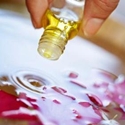Benefits of Massage
Massage Therapy is
a proven and effective means of relaxation and stress relief. Therapeutic
massage is increasingly being recommended by doctors and other health care
professionals to complement traditional medicine as research proves its healing
effects.
Here are the key
benefits of receiving massage:
-
Massage feels good, it is pleasurable and it increases body awareness
and sensitivity.
-
Alleviate “office work syndrome”: tension-related headaches,
migraine,
low-back pain, neck pain, shoulder pain, wrist pain,
trapezius and hamstrings muscle pain, sciatica and various muscular
tightness.
-
Relieve sleeping disorder thus easing or even eliminating medication
dependence.
-
Enhance
immunity by stimulating lymph flow—the body’s natural
defense system.
-
Exercise and stretch
weak, tight, or atrophied muscles.
-
Help
athletes of any level prepare for, and recover from,
strenuous workouts.
-
Improve the condition of the body’s largest organ—the skin.
-
Increase
joint flexibility thereby improving range of motion.
-
Lessen
depression and anxiety.
-
Promote tissue regeneration, reducing
scar tissue and stretch marks.
-
Pump oxygen and nutrients into tissues and vital organs, improving
circulation.
-
Reduce
post-surgery adhesions and swelling.
-
Reduce
spasms and cramping.
-
Relax and soften injured, tired, and
overused muscles.
-
Release endorphins—amino acids that work as the body’s natural painkiller.
Clinical researches done in the past few decades have demonstrated massage
therapy as a potent and one of the safest treatment methods for a wide variety
of ailments as well as for wellness maintenance.
Circulatory System's Benefits:
-
Produces a
dilation of the blood vessels thereby improving circulation.
-
Reduces
the lack of blood, reduces pain due to the irritation of free nerve endings.
-
Speeds the
elimination of the waste products of metabolism.
-
Massage
helps to reduce swelling.
-
Massage
increases the number of red blood cells in circulation.
-
Massage
has the overall effect of lowering blood pressure.
-
Facilitates tissue healing through the enhancement of circulation.
-
Massage
reduces the pulse rate.
-
Massage
can break the cycle of spasm and pain by decreasing both.
Musculoskeletal Systems' Benefits:
-
Increases
the blood supply and nutrition to the muscles.
-
Helps
muscles recover more quickly from exertion and fatigue.
-
Relaxes
muscles, reducing spasm, tension and cramping.
-
Reduces
adhesions (knots) and fibrosis.
-
Improves
the circulation and nutrition of the joints and can increase joint range of
motion.
-
Helps to
reestablish proper tone in muscles.
-
Reduces
muscle and soft tissue pain.
-
Reduces
joint strain and compression through releasing tight muscles and tendons.
-
Increases
ease and efficiency of movement.
-
Supports
increased work capacity and metabolism.
-
Massage
can stimulate muscle contraction.
Nervous System's Benefits:
-
Massage
stimulates the touch, pressure and proprioceptive receptors of the skin and
underlying tissue.
-
Massage
can have a sedative, stimulating or even exhausting effect on the nervous
system depending on the type and length of treatment given.
-
Massage
reduces sympathetic stimulation and helps to balance the autonomic nervous
system.
-
Massage
relaxes the muscles and helps to reestablish proper tonus through its effect
on the neuromuscular reflex pathways.
-
Known to
affect the neurotransmitters of the brain and increase endorphin secretion
in particular.
-
Massage
can reduce nerve entrapment through the release of soft tissue or muscular
binding.
-
Massage
can reduce nerve root compression caused by muscular tension.
-
"Psychiatric
conditions, most notably depression, have been alleviated by the use of
massage therapy. One of the possible explanations for these findings is the
increase of serotonin levels noted following massage therapy." Tiffany M.
Field, Keep it Simple Series Guide to Massage.
Lymphatic System's Benefits:
-
Massage
increases tissue fluid and lymphatic circulation thus reducing swelling and
enhancing the immune and filtering activities of this system.
-
Massage
increases venous and lymphatic flow.
-
Massage
reduces swelling by enhancing lymphatic circulation.
Excretory System's Benefits:
-
Massage
increases the excretion (via the kidneys) of fluids and waste products of
protein metabolism, inorganic phosphorous and salt in normal individuals.
-
Massage
can facilitate elimination through the large intestines by mechanically
stimulating peristalsis and improving tone.
Skin's Benefits:
Respiratory
System's Benefits:
-
Massage
deepens and normalizes the breathing pattern through relaxation, and release
of tension in the breathing structures, both the rib cage and the muscles of
respiration.
-
Massage
can be used to relieve congestion in the lungs through percussive and
compressive movements.
Digestive System's Benefits:
And while the benefits of massage are currently well documented, new studies are
consistently becoming available that further demonstrate the positive influences
that this therapeutic technique has for everyone.
For further scientific reference, review the
clinical research studies examining the
benefits of massage and also
Reflexology Research.
A Powerful Ally
There’s no denying the power of bodywork. Regardless of the adjectives we assign
to it (pampering, rejuvenating, therapeutic) or the reasons we seek it out (a
luxurious treat, stress relief, pain management), massage therapy can be a
powerful ally in your healthcare regimen.
Experts estimate that upwards of ninety percent of disease is stress related.
And perhaps nothing ages us faster, internally and externally, than high stress.
While eliminating anxiety and pressure altogether in this fast-paced world may
be idealistic, massage can, without a doubt, help manage stress. This translates
into:
-
Decreased anxiety.
-
Enhanced sleep quality.
-
Greater energy.
-
Improved concentration.
-
Increased circulation.
-
Reduced fatigue.
Furthermore, clients often report a sense of perspective and
clarity after receiving a massage. The emotional balance bodywork provides can
often be just as vital and valuable as the more tangible physical benefits.
Profound Effects
In response to massage, specific physiological and chemical changes cascade
throughout the body, with profound effects. Research shows that with massage:
-
Arthritis sufferers note fewer aches and less stiffness and pain.
-
Asthmatic children show better pulmonary function and increased peak air
flow.
-
Burn injury patients report reduced pain, itching, and anxiety.
-
High blood pressure patients demonstrate lower diastolic blood pressure,
anxiety, and stress hormones.
-
Premenstrual syndrome sufferers have decreased water retention and cramping.
-
Preterm infants have improved weight gain.
Increase the Benefits with Frequent Visits
Getting a massage can do you a world of good. And getting massage frequently can
do even more. This is the beauty of bodywork. Budgeting time and money for
bodywork at consistent intervals is truly an investment in your health. And
remember: just because massage feels like a pampering treat doesn’t mean it is
any less therapeutic. Consider massage appointments a necessary piece of your
health and wellness plan, and work with our therapists to establish a treatment
schedule that best meets your needs.
Review massage information from the U.S.
National Center for Complementary and Alternative
Medicine, a division of the U.S. National Institutes of Health
Note:
Massage does not replace the need for medical attention or psychological
counseling. Massage therapists do not diagnose medical problems.
|



|